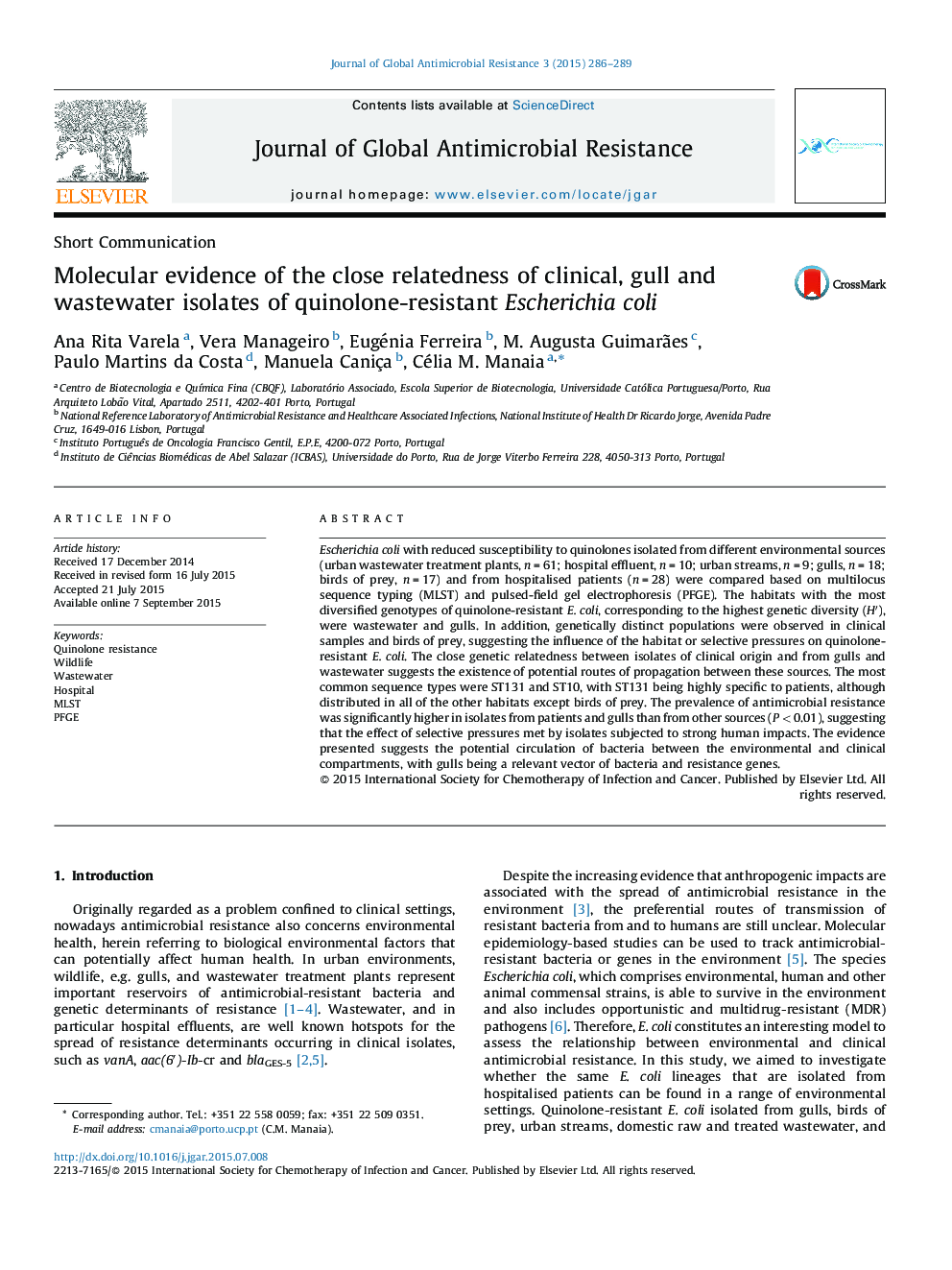| کد مقاله | کد نشریه | سال انتشار | مقاله انگلیسی | نسخه تمام متن |
|---|---|---|---|---|
| 3405686 | 1223475 | 2015 | 4 صفحه PDF | دانلود رایگان |

• Escherichia coli isolated from wastewater, streams, gulls, birds of prey and clinical samples were compared based on MLST.
• Clinical isolates and birds of prey comprised the most divergent E. coli populations.
• Wastewater and gulls comprised the most diverse and ubiquitous E. coli populations.
• Wastewater and gulls were suggested as possible routes of dissemination of clinically relevant E. coli.
Escherichia coli with reduced susceptibility to quinolones isolated from different environmental sources (urban wastewater treatment plants, n = 61; hospital effluent, n = 10; urban streams, n = 9; gulls, n = 18; birds of prey, n = 17) and from hospitalised patients (n = 28) were compared based on multilocus sequence typing (MLST) and pulsed-field gel electrophoresis (PFGE). The habitats with the most diversified genotypes of quinolone-resistant E. coli, corresponding to the highest genetic diversity (H′), were wastewater and gulls. In addition, genetically distinct populations were observed in clinical samples and birds of prey, suggesting the influence of the habitat or selective pressures on quinolone-resistant E. coli. The close genetic relatedness between isolates of clinical origin and from gulls and wastewater suggests the existence of potential routes of propagation between these sources. The most common sequence types were ST131 and ST10, with ST131 being highly specific to patients, although distributed in all of the other habitats except birds of prey. The prevalence of antimicrobial resistance was significantly higher in isolates from patients and gulls than from other sources (P < 0.01), suggesting that the effect of selective pressures met by isolates subjected to strong human impacts. The evidence presented suggests the potential circulation of bacteria between the environmental and clinical compartments, with gulls being a relevant vector of bacteria and resistance genes.
Figure optionsDownload as PowerPoint slide
Journal: Journal of Global Antimicrobial Resistance - Volume 3, Issue 4, December 2015, Pages 286–289